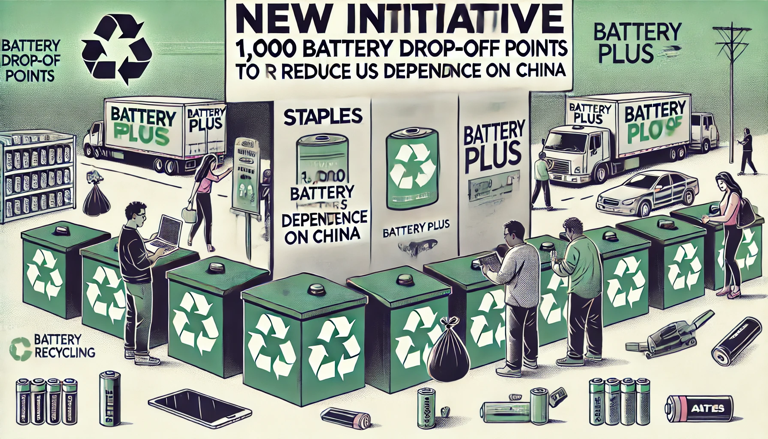The Department of Energy (DOE) has recently announced a significant initiative aimed at addressing both environmental and economic challenges related to electronic waste and critical material dependency. The DOE is funding the establishment of 1,000 battery drop-off points across the United States. These collection sites will accept not only batteries but also smartphones and other electronic devices that are no longer valuable on the resale or trade-in market.

Addressing Environmental Concerns
This initiative is primarily designed to tackle an environmental issue. Disposing of consumer electronics devices, particularly once they have no resale value, can be problematic for consumers. Household garbage and recycling services typically do not accept these items due to the potential fire risk they pose. While old smartphones can be dropped off at Apple Stores for recycling, not everyone has convenient access to one.
The new drop-off points will provide a more accessible solution, allowing consumers to dispose of a variety of electronic devices, including smartphones, smartwatches, laptops, and vacuum cleaners, in an environmentally friendly manner. This effort is part of a broader $14 million scheme announced by the Biden administration, which compensates other retailers for collecting these items for recycling.
Reducing Dependence on Chinese Materials
Beyond the environmental benefits, the DOE sees this initiative as a critical step toward reducing US dependence on China for raw materials necessary for clean energy technologies. Many rechargeable batteries contain essential elements such as lithium, nickel, cobalt, graphite, and manganese. These materials are crucial for manufacturing clean energy technologies, including wind turbines and electric vehicles (EVs). As EV sales continue to grow in the US, the demand for these materials will increase.
Currently, China dominates the market for processing and, in many cases, extracting these critical materials. US Secretary of Energy Jennifer Granholm emphasized the need for the US to develop multiple ways to access these materials domestically, with recycling being a key component. She noted that the US battery recycling capacity has been "very underutilized."
Logistics and Economic Challenges
The collection points will be located at Staples and Battery Plus stores, chosen for their accessibility and nationwide distribution. However, experts highlight that government funding is necessary not just for collection but also for processing these materials. At present, recycling these materials can be more expensive than importing them from China, making it a less attractive option without financial support.
Conclusion
The DOE's initiative to fund 1,000 battery drop-off points across the US represents a proactive approach to addressing the environmental impact of electronic waste and reducing dependency on foreign raw materials. By improving access to recycling facilities and promoting domestic processing capabilities, this initiative aims to create a more sustainable and economically resilient supply chain for critical materials needed in clean energy technologies. As this program rolls out, it will be crucial to monitor its impact on both environmental outcomes and the US's strategic material independence.